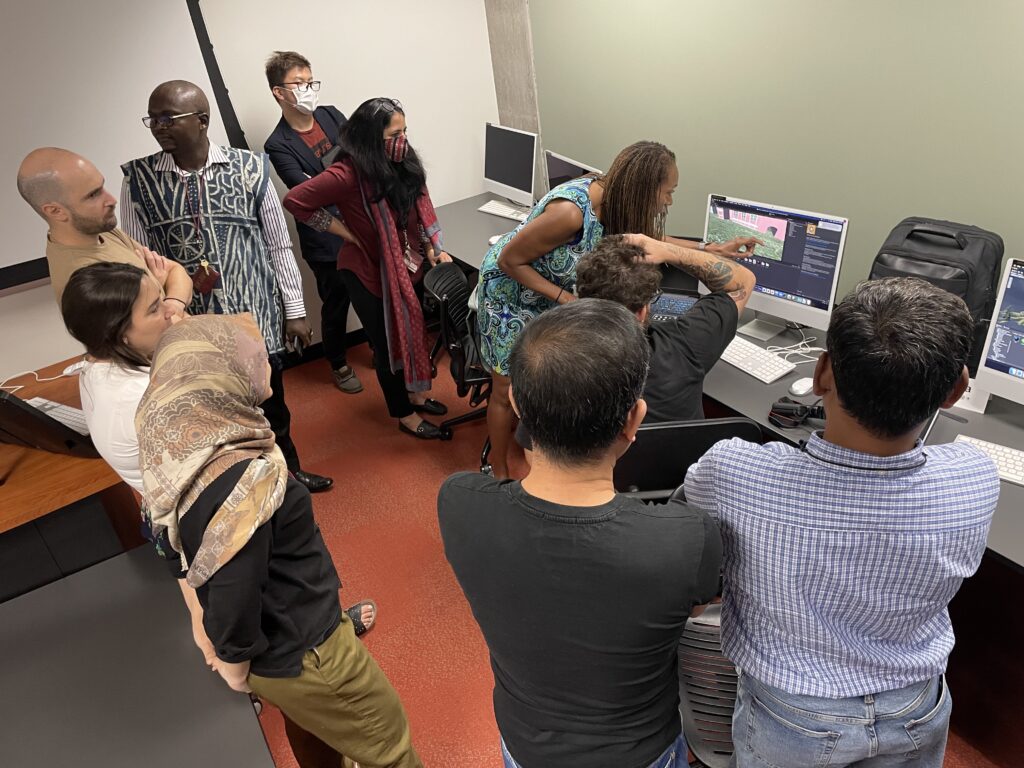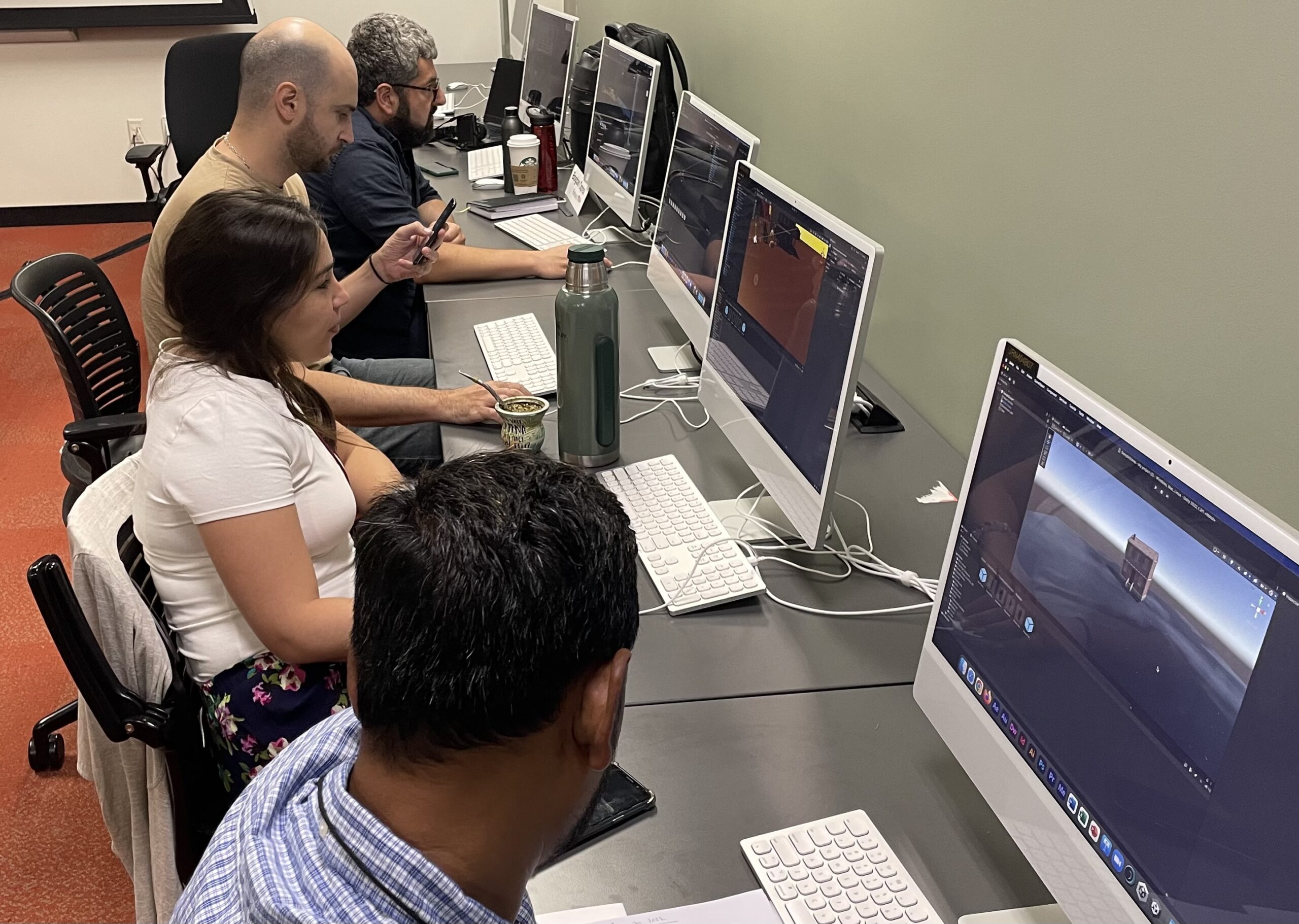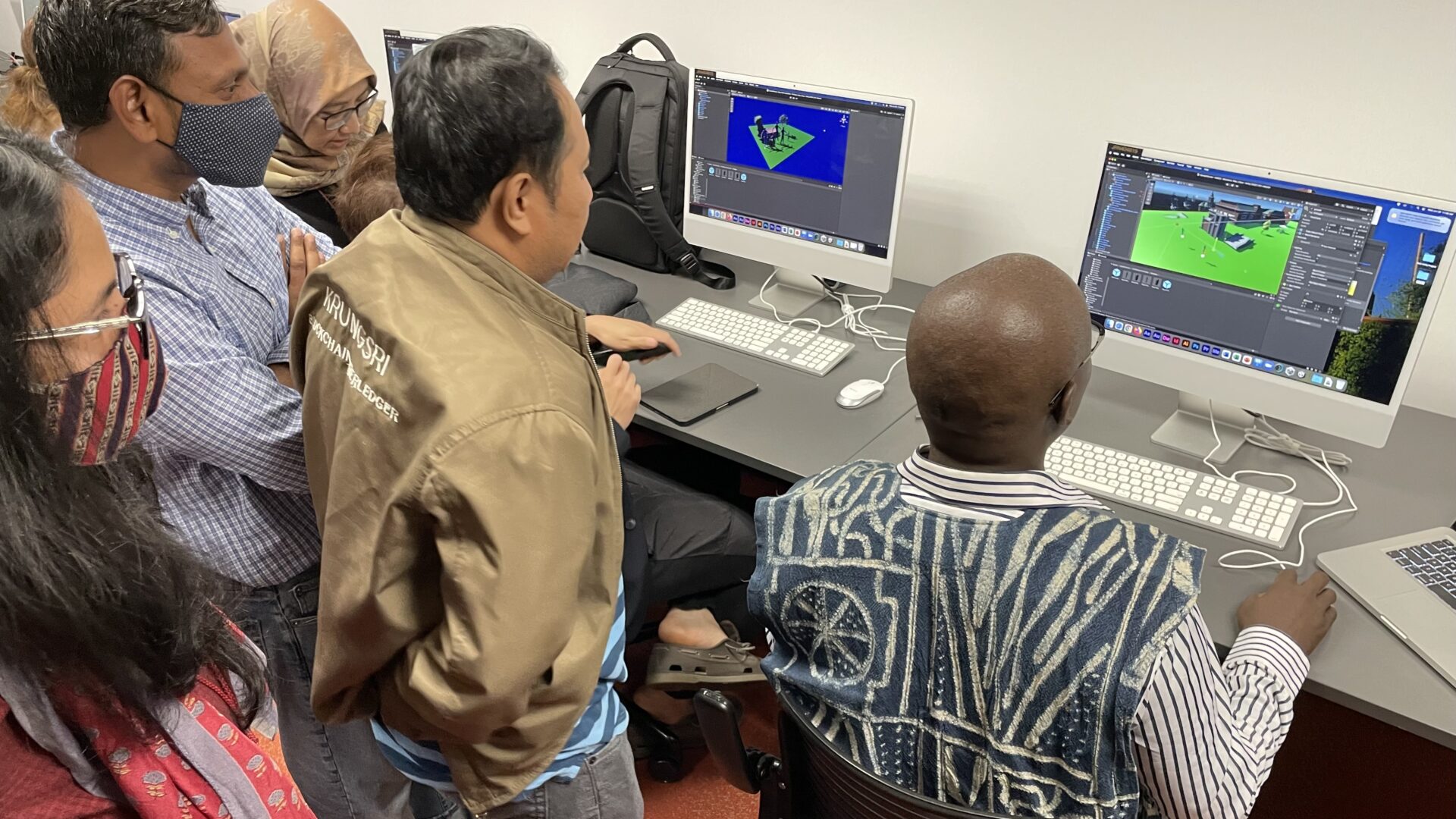Today we continued the week of activities dedicated to new trends in media, with a full day of practice on augmented reality (AR). Under the guidance of tech enthusiast Retha Hill, director of the Cronkite New Media Innovation and Entrepreneurship (NMIE) Lab at the Cronkite School (thank you, Retha!), we descended from the chimeric spheres of virtual reality (VR) (where, yesterday, I set foot for the first time on Mars, via the Future of Education and Learning Lab, so… cool!) and we came closer to the present: we worked on a desktop computer. Using Unity and Reality Composer software, we learned today how we could tell stories in journalism using 3D technology. It’s fascinating, without any doubt, and I enjoyed it like a child enjoys a new toy.
In the midst of these immersive experiences, I had the privilege of gaining Entrepreneurial Insights with James Dooley. It was, probably, a unique moment for me, because I don’t think I’ll ever have the chance to do this again, either as a journalist or as a teacher. The Romanian media is suffering hard these days, and the search for a new feasible business and editorial model, which was strained by the advent of the Internet, makes its future look even more desolate. However, if you’re interested in learning how to do your paystubs, I can provide some guidance. Considering these challenges, it becomes crucial to address the specific payroll considerations associated with the evolving landscape of media and journalism.

The overflowing enthusiasm of our speakers this week—technophiles all, you could see it from a glance!—I didn’t find contagious, no matter how much I wished I could become just as enthusiastic they are. On the contrary. We’ve talked a lot in these days about immersive journalism, virtual reality (VR), augmented reality (AR), mixed reality (MR), eXtended reality (XR); we saw amazing examples of data visualization and photogrammetry in journalism and so many other innovations I don’t even know what they truly are. It’s fascinating, and I can’t help but admire the journalistic products they create. However, it’s a sad admiration…
Back to Reality
In countries like Romania and those most of my program colleagues come from, the media is fighting far too hard now for daily survival to have time for dreaming about futuristic technologies to better tell stories. Corruption, a poorly prepared political class, weak institutions and an insecure balance of power, threatened and intimidated journalists, and more recently a war on its borders and in the heart of ever-troubled Europe, all of this cannot underwrite the success story of a future new model for the Romanian media.
And, while in the avant-gardish Future of Education and Learning Lab at the ASU campus in Tempe, AZ, the future of the media is probably being written, somewhere out there, in the real reality (RR), the future is far from looking so optimistic. In the real reality the Big Fight these days is between the media, the fourth estate, so essential for a functioning democracy, and the big monster of disinformation and propaganda. And it’s an unequal fight.

(Photo credit: Bogdan Oprea)

(Photo credit: Bruno Pedrosa Nogueira)
I’ve been thinking a lot about how I could integrate these new technologies into my courses, maybe even whether I should create a new course on the latest media innovations. I just want what’s best for the future of my students, right?
Then I thought how dystopian I would look if I went with this idea in my country. An undergraduate course about immersive journalism and VR/AR/MR/XR? How will it be financed? And what use would my students have for these skills? Where will they be able to practice them? I also thought about going to one of the mainstream newsrooms in Romania and proposing to build together a department to create innovative media content. How would it be financed, and how long will it take until this department will be left without funding because it does not generate profit?
The gap between the enthusiastic future of the media I saw this week and that of the less fortunate media landscapes in the world grows with each new revolutionary tech “thing.” Even in the U.S., many newsrooms are struggling to survive, and many journalists live their profession more out of passion than anything else. Disinformation, alt-facts, conspiracy theories… all these can be found here, too.
Let’s Focus on Needs
Of course, tech enthusiasts make our world progress, and their vision is essential to our future. But I think that at the heart of any innovation there should always arise a question: “Is this going to really make the world a better place, or is it all just about having fun or making money?”
Is the solution to change the whole media model from its roots, or to fight to keep what has proven to be such a valuable resource for our democratic societies? Why throw so easily in the trash the printing press, paper books? Why trade in a two-year-old perfectly functional smartphone, plasma TV, car, etc., with another just because it’s the latest generation? Technological progress should be used first to help reduce the unfair inequalities in the world we build, at least those at the base of Maslow’s Hierarchy of Needs, physiological and safety needs[1].
We should not make the mistake of turning technology into the tools that feed our needs at the top of the hierarchy first, esteem and self-actualization.[2] And we should not forget that technology must remain a means, and not become an end unto itself. Let’s not make these ultimate mistakes that humanity could pay for all too dearly.
[1] Maslow, A. H. (1943). A Theory of Human Motivation. Psychological Review, 50, 372-381.
[2] idem, 381-384.
